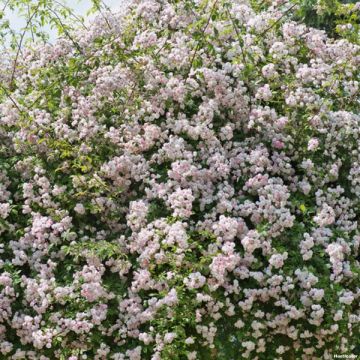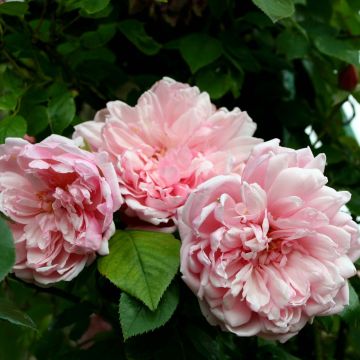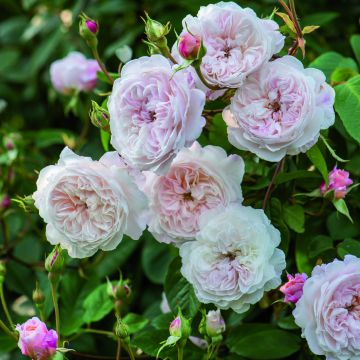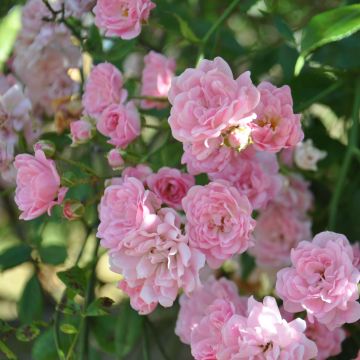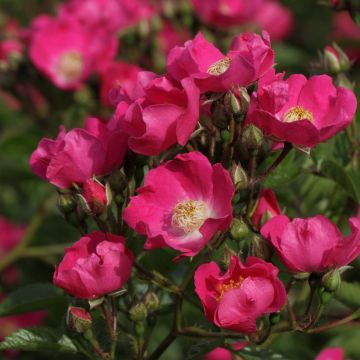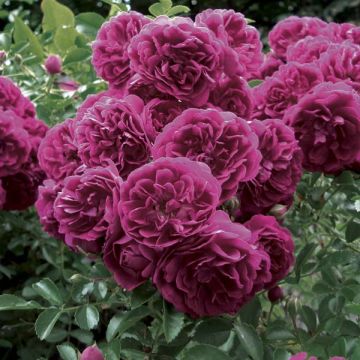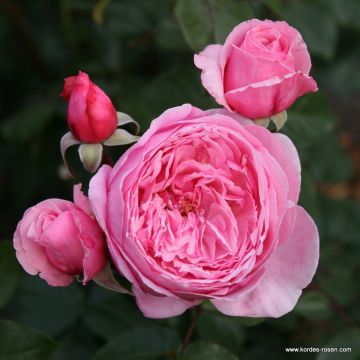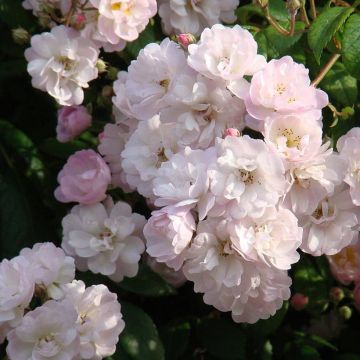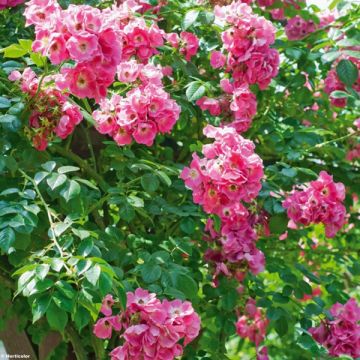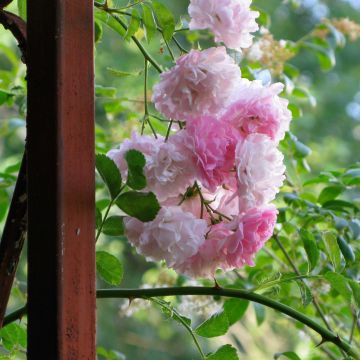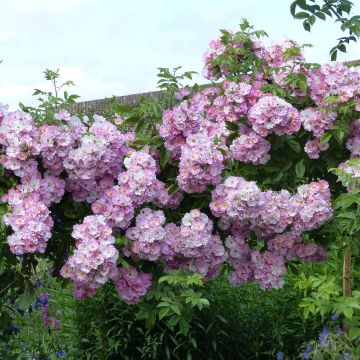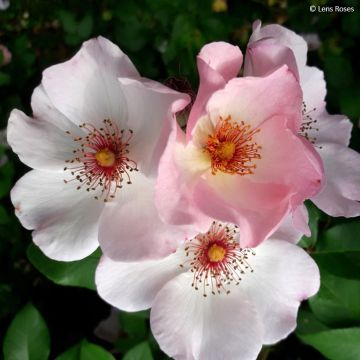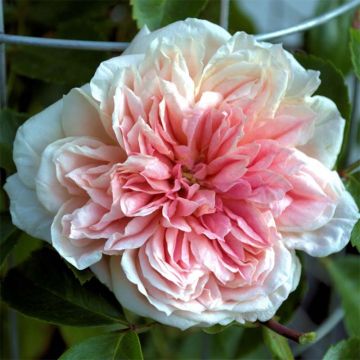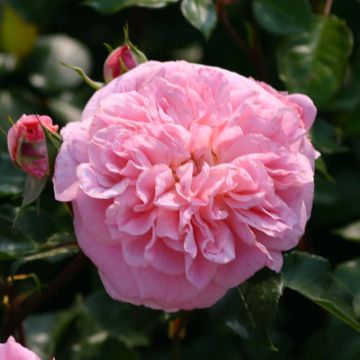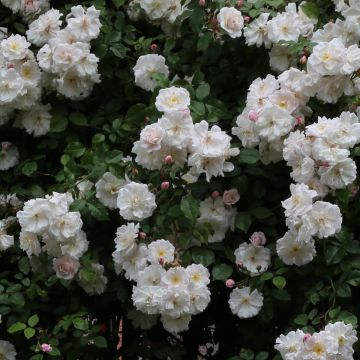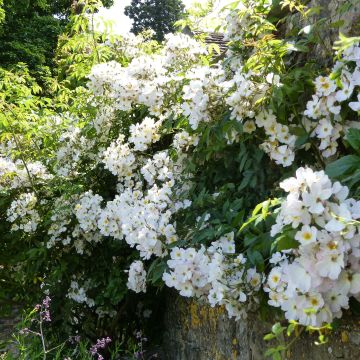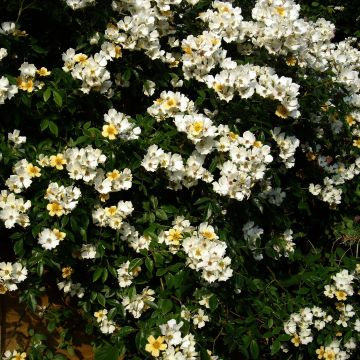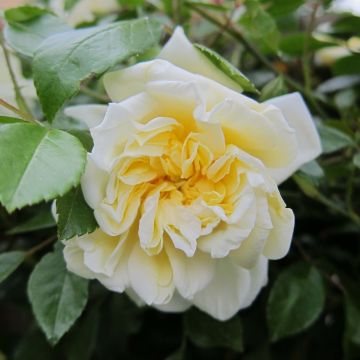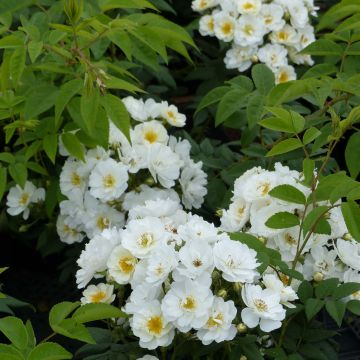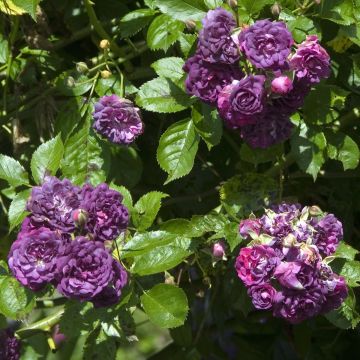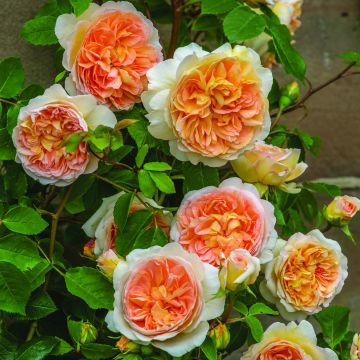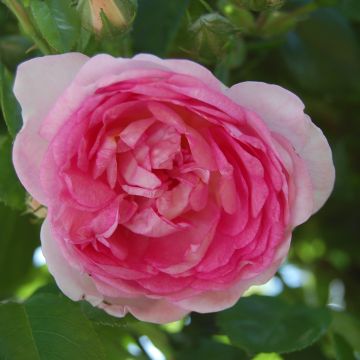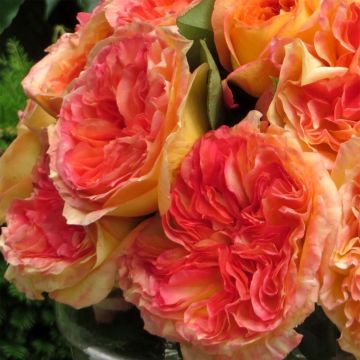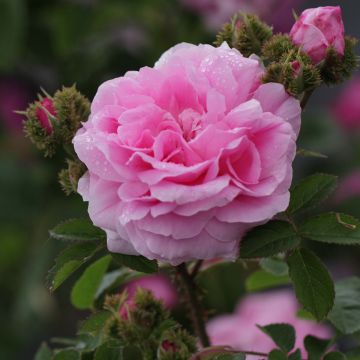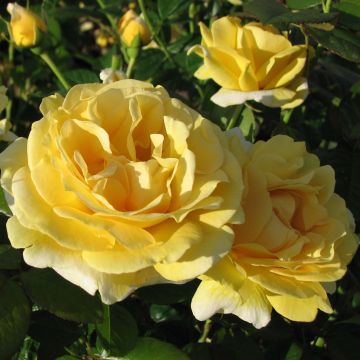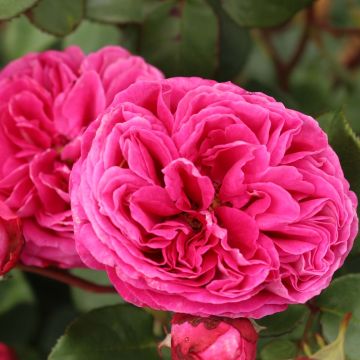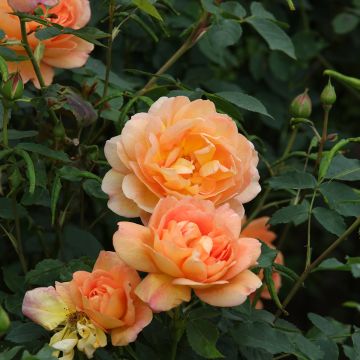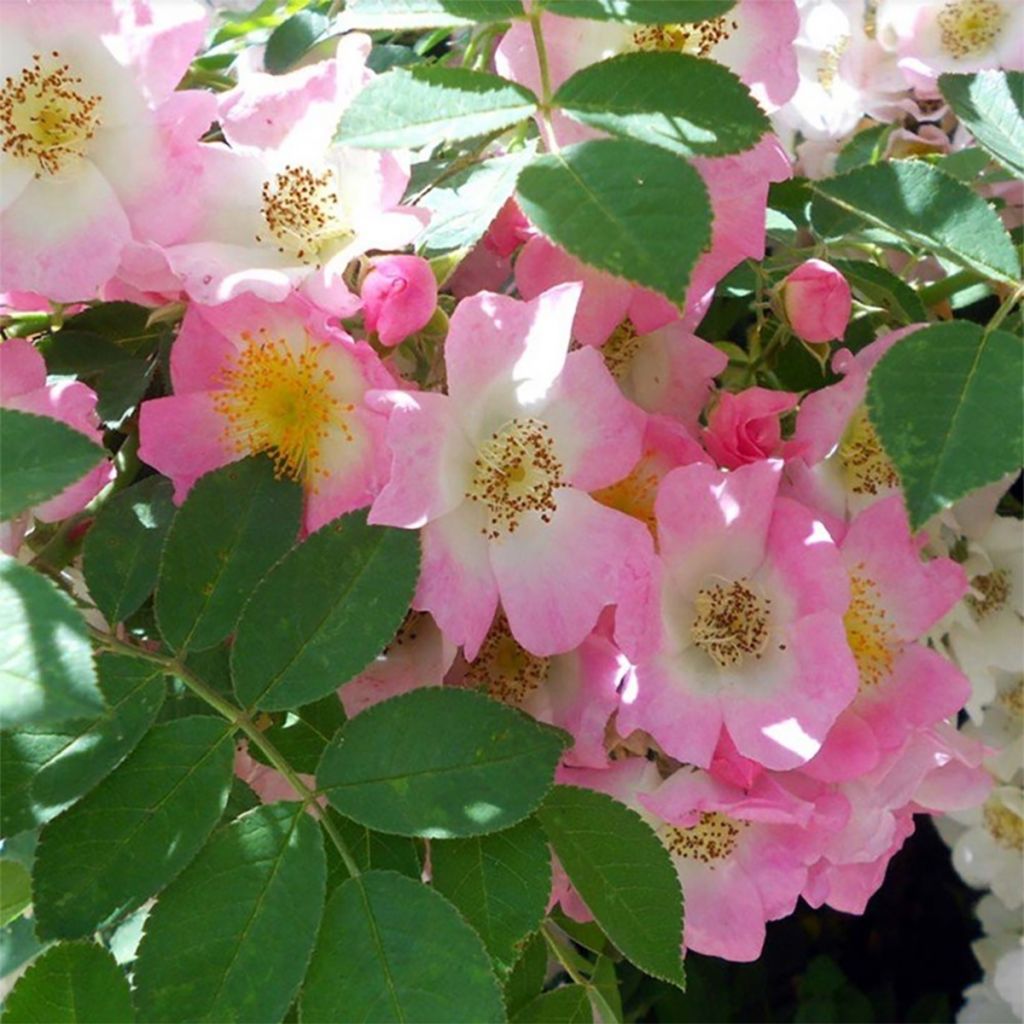

Rosa x soulieana Kew Rambler
Rosa x soulieana Kew Rambler
Rosa x soulieana Kew Rambler
Soulie's Rose, Rambling Rose
Arrived in a deplorable state, sick, dead branches... not labelled and very late on the delivery time, they were supposed to be refunded to me a month ago, I was warned it would take long but still!
patricia, 19/06/2024
Why not try an alternative variety in stock?
View all →This plant carries a 24 months recovery warranty
More information
We guarantee the quality of our plants for a full growing cycle, and will replace at our expense any plant that fails to recover under normal climatic and planting conditions.
From €5.90 for pickup delivery and €6.90 for home delivery
Express home delivery from €8.90.
Oversize package: home delivery by special carrier from €6.90 per order..
Express home delivery from €8.90.
Delivery to Corse prohibited: UE law prohibits the import of this plant from mainland France to Corse as part of the fight against Xylella fastidiosa. Please accept our sincere apologies.
More information
Does this plant fit my garden?
Set up your Plantfit profile →
Description
The 'Kew Rambler' Rose is a reliable and vigorous climbing rose whose unique and relatively late flowering is enchanting. It produces branches that reach 7 metres (23 feet) and are covered in a cloud of charming small pearly pink and white wild roses. After flowering, it is adorned with clusters of orange fruits that are charming in the soft light of autumn. Its small foliage, a greyish green colour, is very healthy and maintains its beautiful appearance throughout the season. Give it space to grow and place it in a tree, along a long fence, on a pergola where it will preserve winter sunlight, or even in a wild hedge.
The 'Kew Rambler' climbing rose, created at the Royal Botanic Garden in Kew in 1912, is the result of cross-breeding between Rosa soulieana and the 'Hiawatha' rose. Its first parent is native to the mountains of western China. It passed down its very healthy and abundant foliage, finely divided into 7 leaflets ranging from almond green to grey-blue, and its flexible branches covered in fine hooked prickles. This foliage is deciduous, falling off in autumn. Its second parent, 'Hiawatha', is responsible for the pinkish colour of its flowers and the appearance of its inflorescences. 'Kew Rambler' can reach 6 to 7 metres (20 to 23 feet) in height, with a spread of 3 metres (10 feet). In June-July, its dazzling flowering appears. Numerous flowers, grouped in generous corymbs, open to reveal tender pink flowers with white centres, punctuated by a bouquet of golden-yellow stamens. These simple-shaped flowers, composed of 5 petals, measure approximately 4 cm (2in) in diameter and have a slight fragrance. Each wild rose forms a small elongated orange fruit, so this rose is adorned in late season with beautiful clusters that accompany its yellowing leaves, and then its bare branches in winter. These hips contain a large quantity of a single-seeded achenes. It is worth noting that 'Kew Rambler' is a very cold-resistant rose.
'Kew Rambler' is a powerful and refreshing rose, perfect for enhancing a large space that will be given to it without regret. Like other climbing roses ('Paul's Himalayan' Musk, 'Sander's White' Rambler), it is perfect for filling large spaces and giving them a slightly abandoned, free and unplanned look above overly strict flower beds. It is an ideal companion for trees that it will enliven, old fences, and ugly buildings or sheds to which it adds a charming touch. Trained on a large arch, near the terrace, it will create a romantic and fragrant passage. Since its flowering is not perpetual, it can be paired with a vigorous montana clematis that blooms again at the end of summer ('Mayleen', 'Tetra Rose').
Report an error about the product description
Rosa x soulieana Kew Rambler in pictures
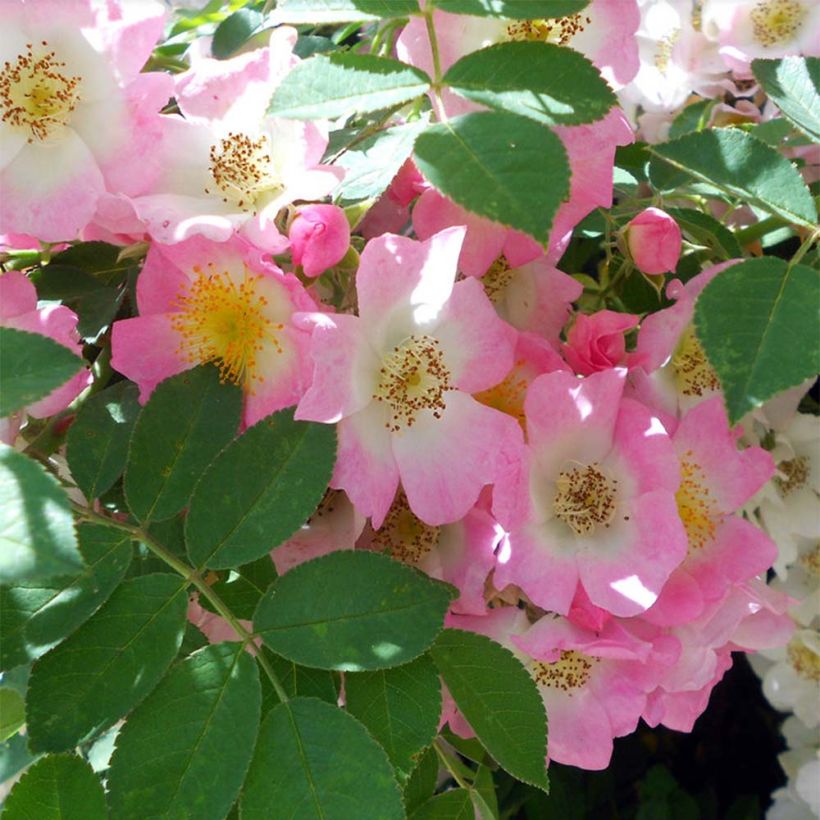

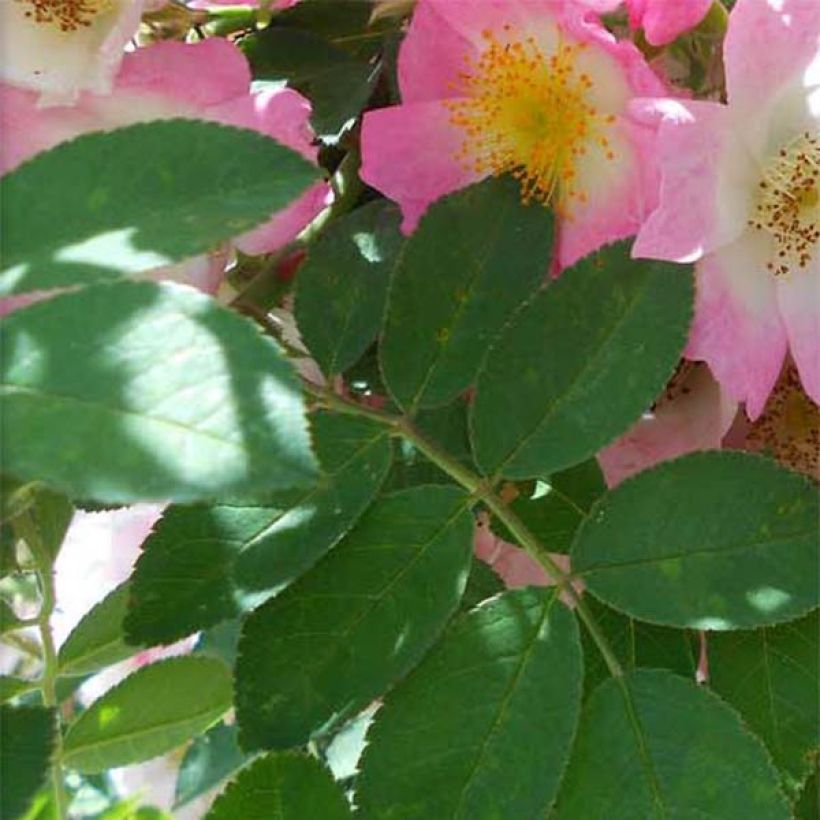

Plant habit
Flowering
Foliage
Botanical data
Rosa
x soulieana
Kew Rambler
Rosaceae
Soulie's Rose, Rambling Rose
Cultivar or hybrid
Rosa canina Laxa (4L/5L pot, Wrapped bare root)
Other Rambling Roses
Planting and care
The 'Kew Rambler' rose adapts to any type of soil, even heavy or sandy, as long as the planting is well taken care of, it is not lacking in water to establish itself, and it has enough nutrients. Plant it in ordinary but deep, well-worked and well-drained soil, and in a sunny or partially shaded, or even shaded, location, which it tolerates very well in a hot climate. Plant it in autumn, never when it is freezing. If planted in the shade of a tree, it will take longer to start growing.
The most floriferous branches are 2 years old. It is useful to reduce the stems that flowered the previous year to 3 or 4 buds, or pruned to 15 cm (6in). The new sturdy stems will be trained and the old ones removed if necessary. Quite hardy, this rose can withstand temperatures down to -20°C (-4°F), and if, despite everything, after a harsh winter, the branches freeze to the ground, this perennial will regrow from the base in spring. It may be helpful to remove dead wood in winter and remove faded flowers if fruit formation is not desired. If necessary, a light pruning can be done in spring after the risk of frost has passed. Alternatively, the climbing roses can be left to grow freely if there is plenty of space.
If you plant a climbing rose next to a living tree, the rose's root system will compete with the well-established tree's root system. To control watering, a tip: plant the rose in a large container with a perforated bottom, at the foot of the tree. The tree's roots will not penetrate the container for at least a year. Remove the container after 1 year, for example by cutting one side, without disturbing the rose's root system. By then, the rose will have had time to develop its root system deeply and will be more resistant.
Planting period
Intended location
Care
-
, onOrder confirmed
Reply from on Promesse de fleurs
Fragrant Roses
Haven't found what you were looking for?
Hardiness is the lowest winter temperature a plant can endure without suffering serious damage or even dying. However, hardiness is affected by location (a sheltered area, such as a patio), protection (winter cover) and soil type (hardiness is improved by well-drained soil).

Photo Sharing Terms & Conditions
In order to encourage gardeners to interact and share their experiences, Promesse de fleurs offers various media enabling content to be uploaded onto its Site - in particular via the ‘Photo sharing’ module.
The User agrees to refrain from:
- Posting any content that is illegal, prejudicial, insulting, racist, inciteful to hatred, revisionist, contrary to public decency, that infringes on privacy or on the privacy rights of third parties, in particular the publicity rights of persons and goods, intellectual property rights, or the right to privacy.
- Submitting content on behalf of a third party;
- Impersonate the identity of a third party and/or publish any personal information about a third party;
In general, the User undertakes to refrain from any unethical behaviour.
All Content (in particular text, comments, files, images, photos, videos, creative works, etc.), which may be subject to property or intellectual property rights, image or other private rights, shall remain the property of the User, subject to the limited rights granted by the terms of the licence granted by Promesse de fleurs as stated below. Users are at liberty to publish or not to publish such Content on the Site, notably via the ‘Photo Sharing’ facility, and accept that this Content shall be made public and freely accessible, notably on the Internet.
Users further acknowledge, undertake to have ,and guarantee that they hold all necessary rights and permissions to publish such material on the Site, in particular with regard to the legislation in force pertaining to any privacy, property, intellectual property, image, or contractual rights, or rights of any other nature. By publishing such Content on the Site, Users acknowledge accepting full liability as publishers of the Content within the meaning of the law, and grant Promesse de fleurs, free of charge, an inclusive, worldwide licence for the said Content for the entire duration of its publication, including all reproduction, representation, up/downloading, displaying, performing, transmission, and storage rights.
Users also grant permission for their name to be linked to the Content and accept that this link may not always be made available.
By engaging in posting material, Users consent to their Content becoming automatically accessible on the Internet, in particular on other sites and/or blogs and/or web pages of the Promesse de fleurs site, including in particular social pages and the Promesse de fleurs catalogue.
Users may secure the removal of entrusted content free of charge by issuing a simple request via our contact form.
The flowering period indicated on our website applies to countries and regions located in USDA zone 8 (France, the United Kingdom, Ireland, the Netherlands, etc.)
It will vary according to where you live:
- In zones 9 to 10 (Italy, Spain, Greece, etc.), flowering will occur about 2 to 4 weeks earlier.
- In zones 6 to 7 (Germany, Poland, Slovenia, and lower mountainous regions), flowering will be delayed by 2 to 3 weeks.
- In zone 5 (Central Europe, Scandinavia), blooming will be delayed by 3 to 5 weeks.
In temperate climates, pruning of spring-flowering shrubs (forsythia, spireas, etc.) should be done just after flowering.
Pruning of summer-flowering shrubs (Indian Lilac, Perovskia, etc.) can be done in winter or spring.
In cold regions as well as with frost-sensitive plants, avoid pruning too early when severe frosts may still occur.
The planting period indicated on our website applies to countries and regions located in USDA zone 8 (France, United Kingdom, Ireland, Netherlands).
It will vary according to where you live:
- In Mediterranean zones (Marseille, Madrid, Milan, etc.), autumn and winter are the best planting periods.
- In continental zones (Strasbourg, Munich, Vienna, etc.), delay planting by 2 to 3 weeks in spring and bring it forward by 2 to 4 weeks in autumn.
- In mountainous regions (the Alps, Pyrenees, Carpathians, etc.), it is best to plant in late spring (May-June) or late summer (August-September).
The harvesting period indicated on our website applies to countries and regions in USDA zone 8 (France, England, Ireland, the Netherlands).
In colder areas (Scandinavia, Poland, Austria...) fruit and vegetable harvests are likely to be delayed by 3-4 weeks.
In warmer areas (Italy, Spain, Greece, etc.), harvesting will probably take place earlier, depending on weather conditions.
The sowing periods indicated on our website apply to countries and regions within USDA Zone 8 (France, UK, Ireland, Netherlands).
In colder areas (Scandinavia, Poland, Austria...), delay any outdoor sowing by 3-4 weeks, or sow under glass.
In warmer climes (Italy, Spain, Greece, etc.), bring outdoor sowing forward by a few weeks.

































